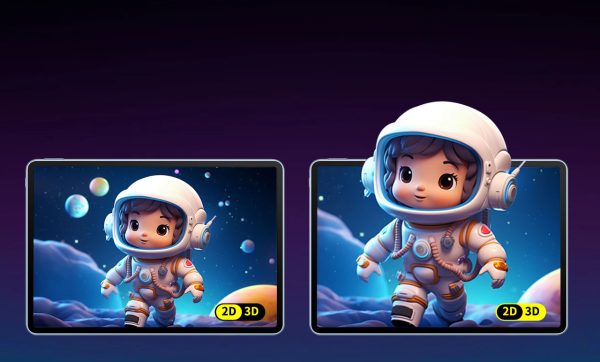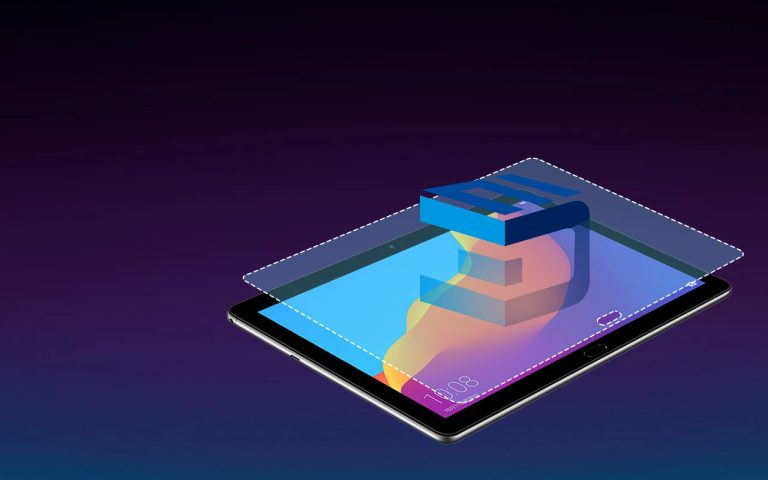Yes, 2D to 3D conversion requires image preprocessing. When transforming a flat image into a dimensional scene, a system needs to infer depth. This process can either happen on-the-fly or be assisted through structured preprocessing. Image preprocessing refers to various techniques applied to an image—such as edge detection, depth mapping, and contrast enhancement—before conversion begins.
The reasons for preprocessing are as follows:
-
Accurate Depth Perception: Preprocessing helps the system predict and simulate depth layers more accurately.
-
Noise Reduction: It removes visual clutter and noise, which can otherwise confuse depth algorithms.
-
Sharp Edge Detection: Highlighting boundaries between objects enhances stereoscopic separation in the final 3D output.
-
Uniform Lighting Correction: Ensures consistent illumination so the depth simulation doesn’t get distorted by shadows or highlights.
Without preprocessing, the conversion engine on a 3d tablet without glasses may produce unstable or inconsistent visuals—particularly during fast motion or in scenes with complex textures.
Tips:Does real-time 2D to 3D conversion require image preprocessing?
Most people think that real-time 2D to 3D conversion does not require image preprocessing, but it actually does.The key difference is that the processing is optimized for speed to meet real-time performance demands. While the algorithms are faster, steps like edge detection, noise filtering, and contrast adjustment are still necessary to ensure accurate depth estimation and visual quality.
Key Preprocessing Techniques in 2D to 3D Conversion
For users or developers interested in going a step further—perhaps enhancing content before uploading to a 3d tablet without glasses—here are the most widely used preprocessing techniques:
-
Depth Estimation Algorithms:Use AI or stereo vision models to guess where foreground and background elements exist.
-
Color and Contrast Enhancement:Improves visibility of layered details by sharpening gradients.
-
Semantic Segmentation:Helps separate objects like people, buildings, and trees to allow for depth layering.
-
Noise Filtering:Cleans up low-light or low-quality footage, reducing the chance of conversion errors.
-
Motion Vector Analysis:Especially useful for videos, analyzing frame-to-frame movement to enhance real-time depth.
These techniques are commonly integrated into both desktop software and built-in tablet conversion engines.
Choosing the Right Tools for Conversion and Preprocessing
Several tools integrate preprocessing directly into the 2D to 3D conversion pipeline. These can either run on PCs or be apps available for installation on your 3d tablet without glasses.
-
E3DPlayer: Offers real-time preprocessing and conversion using AI depth mapping and eye-tracking.
-
AI SDKs from 3D solution providers: Designed for developers to preprocess and convert at the same time.
-
Online Conversion Platforms: Some offer cloud-based conversion with preprocessing features such as contrast normalization and region segmentation.
When selecting tools, make sure they support high resolution and offer controls for depth range and stereoscopic strength. This is especially vital if you’re using the output for professional showcases or prolonged viewing.

How a 3D Tablet Without Glasses Handles Real-Time Conversion
The magic of a 3d tablet without glasses lies in its ability to provide immersive visuals without extra gear. Here’s how the process typically works in real time:
-
Live Frame Capture: Whether it’s an image or video, the engine grabs each frame.
-
Onboard Preprocessing: Some level of smoothing, contrast adjustment, and object recognition is performed.
-
Depth Simulation: AI algorithms simulate a stereoscopic view by layering content.
-
Display Output: The screen uses parallax barrier or lenticular lens technology to deliver 3D visuals directly to your eyes, no glasses needed.
In more advanced tablets, eye-tracking ensures each frame’s depth aligns with your viewing angle, enhancing comfort and immersion without requiring you to adjust manually.
How to Optimize Your Own 3D Experience
For consumers looking to get the best out of their 3d tablet without glasses, here are a few practical tips:
-
Use high-quality 2D content: Avoid blurry or low-res sources.
-
Update your firmware and apps: Ensure you’re using the latest engine algorithms.
-
Adjust depth settings: Many tablets offer sliders for stereoscopic strength—avoid extreme settings to prevent eye fatigue.
-
Experiment with conversion modes: Some apps let you toggle between standard, cinematic, or gaming depth profiles.
Final Thoughts: Preprocessing Is Often Hidden but Always Valuable
So, does 2D to 3D conversion require image preprocessing? The answer is yes—either explicitly through dedicated software or implicitly within your device’s conversion engine. For casual users of a 3d tablet without glasses, the system does most of the work invisibly.





